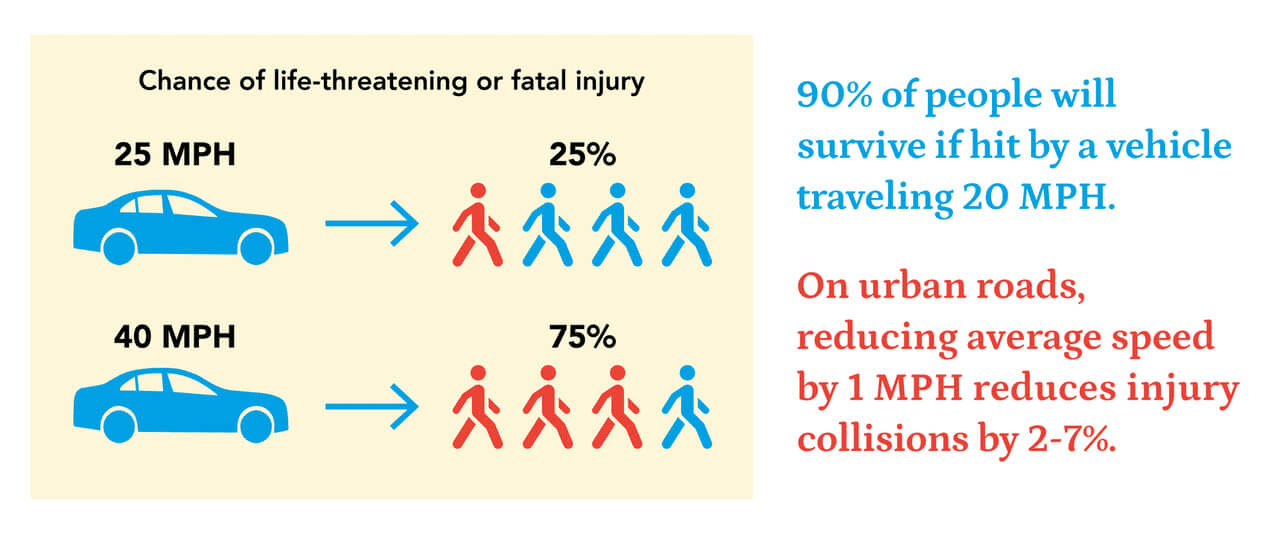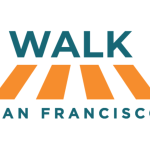20 MPH is now the limit on more San Francisco streets, with more needed
If I had a magic wand for traffic safety, I would immediately wave it to make all drivers in San Francisco go 20 MPH – everywhere, all the time.
Immediately, severe and fatal crashes would plummet.
While there’s no magic wand to slow down drivers, there are countless proven ways streets can be designed to do this. Our report, Making San Francisco a ‘Safe Speeds City,’ details these many solutions.
Every day with the support of our members, Walk SF pushes for more speed solutions on our streets, like our current efforts to pass AB 645 to allow speed safety cameras.
One important speed solution is simply lowering speed limits.
Speed limits are one of the most visible cues on how fast a driver should go. While we know drivers don’t always heed these, safe, appropriate speed limits are a crucial starting point in slowing our streets. Research shows that lowering speed limits is particularly effective in bringing down the most dangerous, outlier speeds.
With the passage of Assembly Bill 43 in 2021, a bill Walk SF strongly advocated for, San Francisco (and all California cities) can now lower speed limits by 5 MPH in business districts (and streets with the highest crash rates will soon also be eligible).
We’re grateful to SFMTA for embracing their new authority more than any other California city, bringing 20 MPH speed limits to 28 street segments in 2022 and 17 more segments so far this year. Read the list of streets and status.
This is a strong start, and SFMTA plans to expand 20 MPH speed limits with a more neighborhood-wide approach with a focus on the South of Market, Financial District, Chinatown, and North Beach neighborhoods – plus on designated high-injury corridors citywide starting in 2024.
Walk SF is pushing for the SFMTA to max out its authority ASAP, and share details for how and when 20 MPH will expand. 20 MPH must become more of the norm than the exception for driver behavior to shift in a meaningful way. If you consider that San Francisco has ~1,200 miles of streets, 20 MPH zones are still extremely rare.
And again, while setting appropriate speed limits is a crucial starting point, a street must also be designed to reinforce slower speeds. Lane reductions, bulb-outs, left turn calming, speed humps, speed radar signs, traffic circles and traffic signal timing are just some of the solutions that are available and are being underutilized in San Francisco.

Slowing our streets will save lives, it’s that simple.
Be sure to read Walk SF’s first-of-its-kind report on dangerous speeds.
Support Walk SF’s #SlowOurStreets campaign with a donation today.




